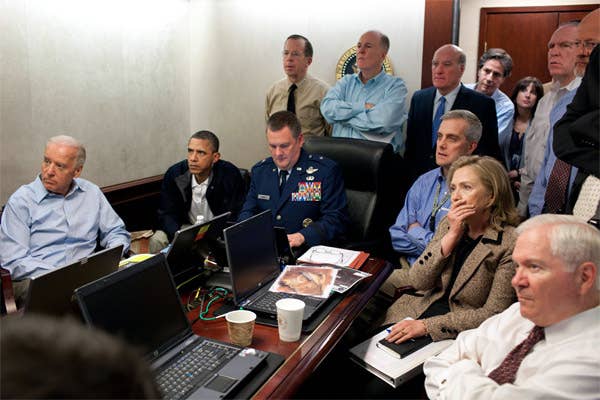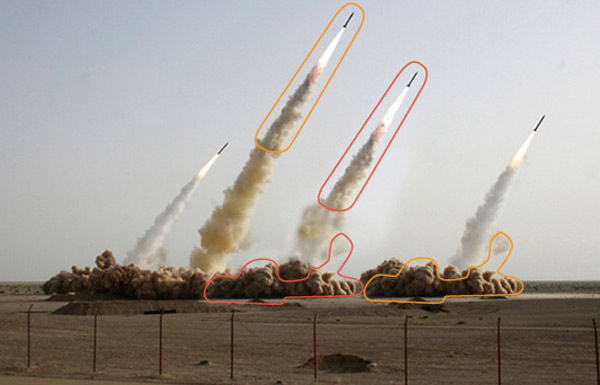
It's a simple, iconic photo: just 13 people in a room, staring intently at something both terrible and important happening just off-screen.
But in the year since the photo was released, it's been the subject of a surprising amount of controversy. It's been memed, Photoshopped to an all-male version in some papers, and in more recent days, it's been the subject of a surprising amount of skepticism from online conspiracy theorists.
The most recent hit comes from a woman named Mara Zebest, a Photoshop expert whose past work includes questioning the president's shortform birth certificate, which earned her a favorable note in Jerome Corsi's Where's the Birth Certificate. (For the curious, here's a critique of her analysis of the birth certificate.) Her credentials include being a "teacher of Adobe programs" for government employees and Fortune 500 companies, and the co-author of over a dozen books about Adobe programs, like this a Photoshop manual from 2000.

Her most recent work arrived yesterday, rehashing old questions about the size of President Obama's head in the photo and a few apparently inconsistent light sources. Some of the faces are more heavily lit than others (which tends to happen with multiple light sources) and the poorly-lit, out-of-focus areas of the photo are, shockingly, a little difficult to make out. (To be fair, the image is Photoshopped: a classified document on the central table has been digitally blurred.)
Which leads to the obvious question: why is it so hard to prove the photo is real?
The sad truth is that, in the age of Photoshop, it's nearly impossible to authenticate an image definitively. I spoke to Jim Hoerricks, forensic image analyst for the LAPD, who explained it this way: "You can't prove the null hypothesis." In other words, trying to prove an image is real is like trying to prove Sasquatch doesn't exist. True believers can always say you just haven't found the right evidence yet. As a result, Hoerricks says, "You can't just say, this is an authentic image. You have to say, it hasn't been tampered with as a copy-paste forgery or a composition or a deletion."
So when approaching a possible forgery, analysts have to tackle and discard different alteration methods one-by-one, first with common software tools and then, if necessary, with slow and expensive computer modeling. Even checking for every known method of forgery isn't enough, according to Hoerricks. "Then somebody figures out a new way to forge things, so then we figure out a new way to detect it, and so on."

When Iran was caught clone-stamping in 2008, it was the result of that kind of pixel-by-pixel analysis along the lines of what Hoerricks describes, on top of Iran's own genuinely clumsy retouching. More recently, North Korea was caught erasing cameramen from Kim Jong Il's funeral procession when an unaltered photo was released to a Japanese news agency. But in the absence of that kind of sloppiness, it's hard to know exactly how an image might have been tampered with. That makes it nearly impossible to prove authenticity. "It's the black swan theory," says Hoerricks. "There's always something you don't know."

Examples of successful verification tend to be painfully intricate. A favorite example is an analysis that Dartmouth professor Hany Farid performed on an often-questioned photo of Lee Harvey Oswald. Conspiracy theorists had doubts about the pattern of shadows in the photo, so Farid used an Autodesk program called Maya to create an intricate 3D mapping of Oswald's face and the position of the sun, showing how the shadows in the photo could have been produced. It took a lot of expertise, good software and no small amount of hard math — most of which is impossible in the case of the Situation Room photo. We don't have access to the room in question for simple security reasons, which makes light modeling unfeasible, for instance.
Zebest's own analysis isn't anywhere close to that. Her evidence is mostly pointing out vague weirdness in some elements of the photo, then moving on. Hints, which prove next to nothing, so they're conversely almost as impossible to disprove. What's left is a vague, unanswerable doubt, and plenty of suggestion.
As it turns out, that's a hard thing to erase.

